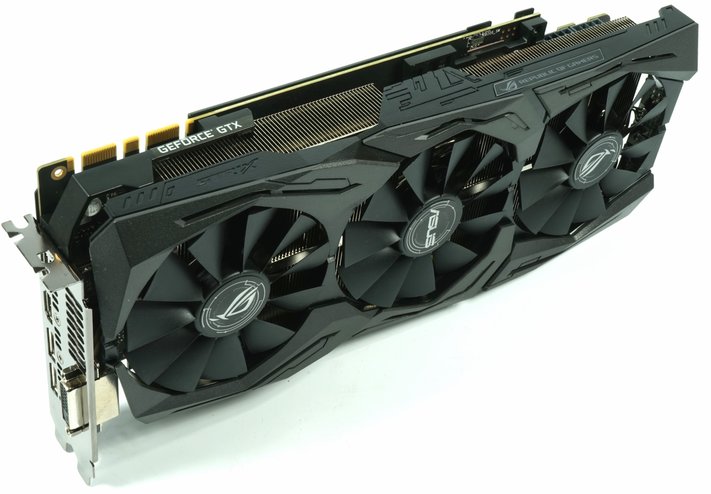Summary
The ROG Strix GeForce GTX 1080 Ti OC is conspicuously unobtrusive, apart from the unavoidable RGB effects. Asus has left the Power Target at a reasonable 275 watts ex works, which is quite sufficient. Even if you make full use of the manual possibilities, the voltage restriction imposed by Nvidia limits in the end and you are at the end as a customer at the end of the day helplessly at the mercy of the GPU lottery anyway.
The cooling concept with the three fans works quite neatly, even if you can hear a kind of oscillating sound at higher speeds under load, since never all three fans really run at the same speeds. We also miss a decent VRM heat sink that could have avoided warming up the board to the GPU.
However, this weakness can only be noticed with longer loops in the stress test and then only in the built-in housing, which puts the whole thing somewhat into perspective. But it's not really optimal.

The bottom line, however, is that it is meckering at a high level, the Asus has designed the fan speeds rather conservatively, which allows relatively quiet operation under full load. Here you could counteract yourself and manually increase the speeds a bit.
| Per |
Balanced |
Cons |
|---|---|---|
| – moderate Power Target . relatively light – hardly spool-feathers – external fan connections – RGB output for stripes |
– adequate factory OC – adequate air cooling – acceptable noise level |
– relatively expensive – Oscillating fan noise – VRM cooling not optimal |
Conclusion
We still award the purchase tip, although this decision was not easy for us at first due to the not quite optimal VRM cooling. In the end, however, the overall concept as such convinced us, because Asus has finally found its way back to the desired path with the heatpipes and the neatly processed heat sink and on the other hand the map is quite consistent in itself. The factory OC fits Power Target and fan curves; the conclusion is almost consistently positive.
Asus has managed to bring a not-too-heavy card into the performance range, where competitors sometimes need nearly 300 grams more for the cooler to offer a similar performance. That alone is worth a recognition, especially since It doesn't have to buy Asus at an extreme volume.
- 1 - Einführung und Übersicht
- 2 - Platine und Spannungsversorgung im Detail
- 3 - Gaming Performance: 2560 x 1440 Pixel (WQHD)
- 4 - Gaming Performance: 3840 x 2160 Pixel (UHD)
- 5 - Leistungsaufnahme im Detail
- 6 - Temperaturen, Taktraten, OC und Wärmebildanalyse
- 7 - Kühlerdetails und Geräuschentwicklung
- 8 - Zusammenfassung und Fazit































Kommentieren